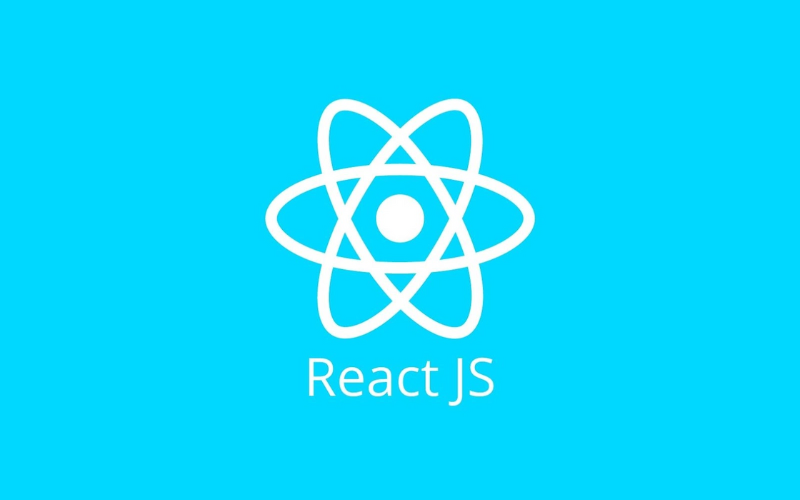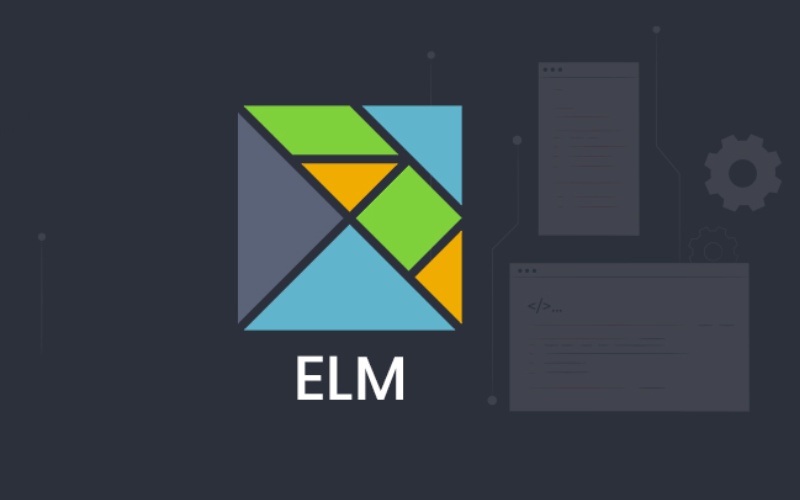Nearly every business is
seeing an increase in demand for web developers. There is a website for nearly
anything, so individuals require web developers for everything from
corporations and organizations to personal and professional use.
One of the most crucial
steps in developing a user-friendly website for business is front-end
development.

Before we dive into best
front-end programming languages, let’s talk about front-end development.
What
is front-end development?
Frontend development is the
branch of web development that concentrates on user experience.
In order to ensure that the
data is presented in an understandable manner, it entails converting the code
created by developers into a graphical interface.
In essence, a front-end
developer works to make the user experience as seamless as possible by being in
charge of everything you see, including styling, graphics, text, alignment,
menus, colors, and so forth.
Front-end developers have a
variety of other tasks in addition to making sure users can navigate the web
application's graphical user interface.
For example, they need to
make sure the website for business or web app is accessible on a variety of
devices.
Top
front end language of 2023
Website functionality and
interactivity vary widely, and front-end programming languages are a relatively
new technology.
In order to accomplish
outcomes, some web sites only need to integrate and format content, while
others might need to integrate a variety of modules.
Each language covered in
this article fills a certain void in the web development industry.
HTML
HyperText Markup Language,
or HTML for short, is one of the best front-end programming languages
available.
The webpage's content is
created using HTML, which may also be used to add links and photos, adjust the
font and text size, and more.
These HTML elements, which
are discrete parts of HTML texts, describe the page's semantics and act as the
foundation for web pages.
Most programmers consider
HTML to be one of the computer languages with the easiest learning curve.
Additionally, it is a free language, therefore software purchases are not
necessary for developers to begin using it.
Users can access major
aspects of the language without using any other plugins or software. This is
why a large number of companies utilize HTML to meet their website design
needs.
Furthermore, the most
popular browsers support HTML. So, if a website is created in HTML, there is no
need to worry about browser compatibility.
🔘 Read More: The top platforms for desktop application development
JavaScript
Next on our list of top
front end language is JavaScript. This popular language for web development was
developed by Netscape to enable users to include interactive and dynamic
elements on their websites.
Although it is influenced by
Java, JavaScript is based on the Sun Microsystems programming language
ECMAScript and has a syntax that is more akin to C.
Because JavaScript is a
client-side scripting language, the client's web browser, rather than the web
server, interprets the source code. This suggests that JavaScript operations
can be carried out after a web page has been loaded without making
communication with the server.
This language was first
developed in 1995, and a lot has changed since then. It has now evolved into a
dynamic, high-level language with multiple paradigms.
JavaScript is utilized to
further involve website users. Its capabilities allow you to enhance a
website's functionality, pictures, videos, and general interactivity.
You can carry out these
actions by clicking a button, swiping down, or hovering your mouse pointer over
an element.
CSS
The layout and presentation
of documents that are made available to users are specified using the CSS
programming language. A document is often a text file structure that utilizes a
markup language, such as the popular HTML and others including XML or SVG.
Using CSS, a document is
converted into a format that audiences can use. For browsers like Chrome,
Firefox, as well as Edge that are intended to graphically convey material to
screens, printers, and projectors, this is particularly crucial.
CSS has attributes that make
it easier to modify character spacing to improve the visual effect and add drop
caps to the start of paragraphs.
The same CSS sheet can be
used across multiple HTML pages and just needs to be written once. Each HTML
element has a defined style that a user can utilize to apply to other web pages
as needed.
Additionally, CSS code is
simple to maintain and users may quickly modify the style globally.
React
Another top front end
language, React, was created by Facebook to build quick and innovative web user
interfaces.

React is a computer language
that may be used to build visual user interfaces and render data for browsers.
React has a ton of
documentation, online training materials, and tutorials, making it a simple
language to learn and use. React is easy to comprehend for front-end developer
who are already familiar with JavaScript in a short amount of time.
One of the main advantages
of the React programming language is virtual DOM. Developers can improve the
structure of an application to achieve the best performance when it is focused
on user interactions and receives frequent data updates.
In addition, this
programming language offers numerous extensions like Flux and React Native
enabling full support of application architecture, going beyond simple UI.
Angular
An open-source framework
called Angular is mostly used to create single-page web applications. It can be
used by developers to create animated menus that are appropriate for HTML web
pages.
Compared to React, Angular
is a more complete and responsive web design framework and makes the creation
of services, elements, and modules simple.
Angular comes with a ton of
tools by default. Tools that can be utilized to handle routing requirements are
among them.
It can be used by front-end
developer to retrieve the necessary data they have in an app. Development and
testing are accelerated by Angular's environment's predefined setup.
Swift
Another top front end
language suitable for creating iOS, macOS, tvOS, and watchOS apps is Swift,
which was introduced by Apple in 2014. It's an excellent option for iOS mobile
apps.
This Objective-C replacement
is thought to be outdated and has a number of issues. One of the Objective-C
concepts that Swift does use is expandable programming. Designing protocols
contrasts with using static typing.
Known for offering open for
all features, Swift is a true open source development language. It currently
features a sizable community that helps new users and a variety of useful
third-party tools.
Developers favor Swift's
syntax because it makes it possible to write consistent, error-free code. Swift
provides a variety of safeguards for reduced mistake rates and improved
readability.
jQuery
one of the other top front
end languages and a well-known JavaScript framework and app development
environment is jQuery.
It is smaller, loads faster,
and is packed with features, all of which make the job of a JavaScript app
developer much simpler. Stateless HTML is no longer patched with JavaScript as
an afterthought.
It is used more frequently
as the foundation and primary engine for web development and app development
across a range of devices, including PCs, tablets, and smartphones.
The most important new
feature of jQuery was its amazing DOM querying tool, which used the well-known
CSS selector syntax.
This part of the open-source
jQuery framework is now known as Sizzle and is a separate open-source part.
Support for chained method
calls in jQuery is another feature that makes web development with it
incredibly simple and appealing.
Where the API allows it, you
can call many methods simultaneously by chaining them together.
Elm
As one of the best front-end
programming languages, Elm is a functional language and framework
made specifically for front-end development and is one of the best. It serves
as the Haskell programming language's base and enhances JavaScript's ability to
be maintained.
Elm is employed to develop
user interfaces that are browser-based. The functional nature of the language
makes it ideal for front-end development procedures. Elm's main goal is to give
web designers an easy-to-use, reliable tool.

It is a fundamental
programming choice and one of the JavaScript alternatives with the closest
resemblance. Elm has a framework architecture akin to Redux.
Elm gives programmers
functions, inputs, and outputs that are obvious. Users produce a predictable
output for every function input. The logic of the code is simplified.
Elm's support for reactive
programming enables users to create user interfaces with functions. They are
able to create a reactive cycle through updates on user action.
Elm compiles code to
JavaScript for the creation of HTML and CSS, enabling it to run in browsers.
TypeScript
TypeScript is another well-liked
front-end programming language and a syntactical superset of JavaScript. Any
JavaScript code is recognized by all browsers as legitimate TypeScript code and
runs as JS.
Applications using
JavaScript can use TypeScript, an additive language with a fundamental
translation layer.
TypeScript is frequently
confused with JavaScript due to its similarity. A handful of the program's
components are directly lifted from JavaScript.
Front-end developers need to
be proficient in JavaScript in order to use TypeScript. This is because
TypeScript code gets converted into JavaScript code before being executed.
JavaScript libraries are
supported by TypeScript, and any JS code can be converted to compiled code. All
of the current JS toolkits, frameworks, and libraries are used in JavaScript
code that is generated using TypeScript.
Vue
Vue is a framework for
building user interfaces that differs from typical monolithic frameworks in
that it was developed to provide the best possible adaptability.
The primary Vue library is
concentrated on a view layer and is simple to use in addition to being simple
to integrate with other project libraries already in place.
Virtual DOM, which is
effectively a replica of the primary DOM component and responds to each change
in the DOM, is a feature of the Vue.js framework and is available as JavaScript
data structures.
The evolution and
modifications of JavaScript data structures can be compared to their original
forms. The final updates that consumers can see are applied to the actual DOM.
Due to its MVVM
architecture, VueJS has two-way binding. Utilizing the QRR facilitates editing
or allocating HTML value attributes to speed up HTML blocks.
To make sure that all UI
changes are transmitted to the UI, VueJS includes two-way communication.
Conclusion
There are two main divisions
in web development: front and back.
Front-end development, in
its most basic form, concentrates on all client-facing elements of a web
application or website. This might entail creating the user interface, formatting
and the page's appearance, and debugging any problems that users may experience.
The above front-end development languages should all be taken into
account by front-end developers.
To decide which of these top
front-end programming languages is ideal for your specific programming needs,
you can compare their advantages, disadvantages, and features.
If you need help to create
the best website for your business or have problem deciding which top front end
language is best for you, contact us now!